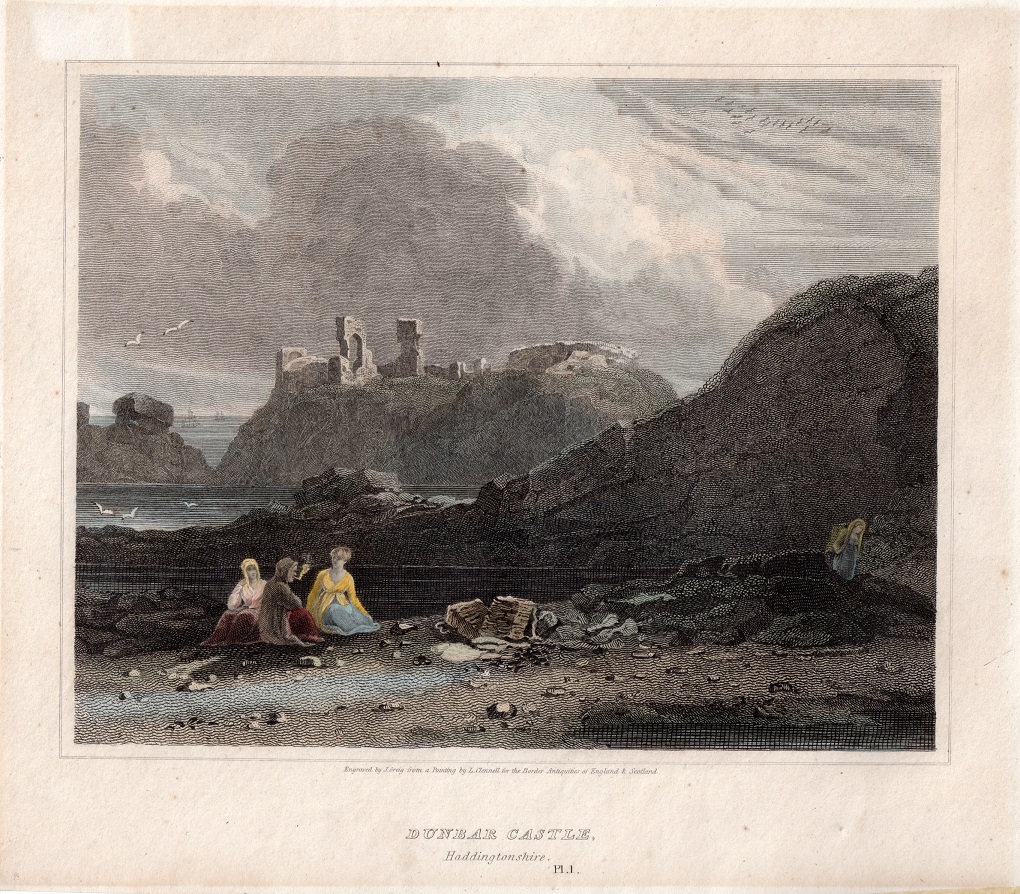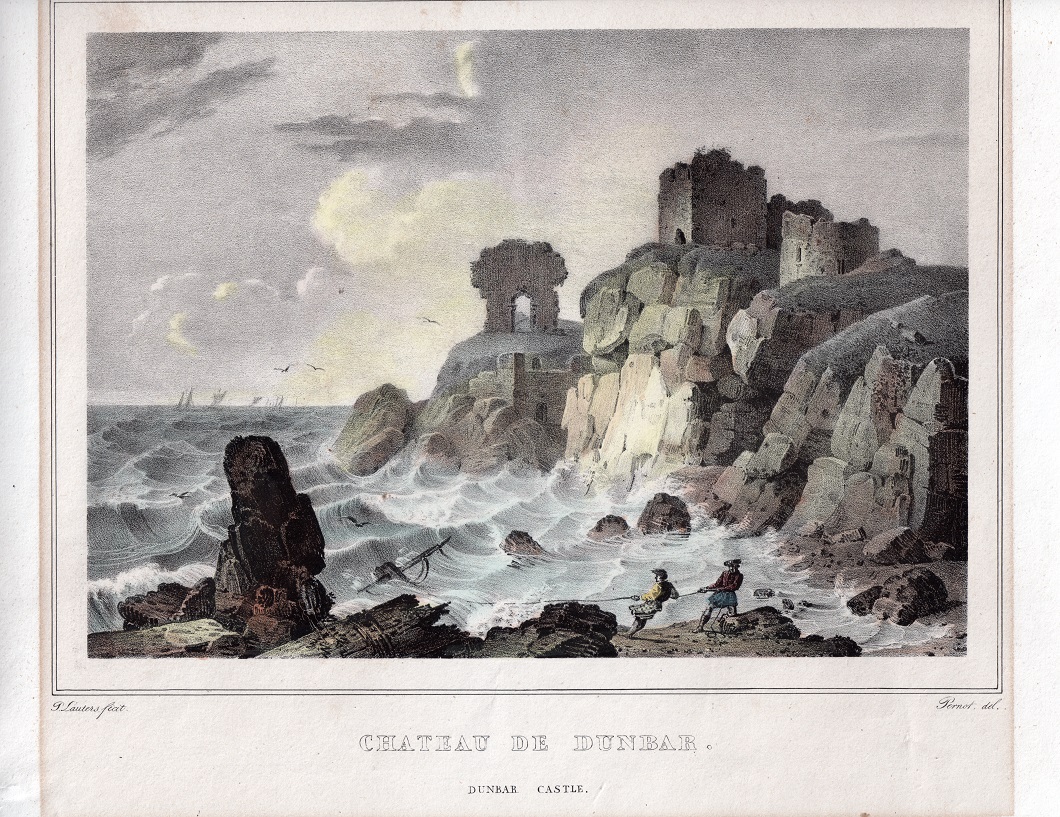This month, we are featuring prints of paintings of Dunbar Castle gifted to the Society by founder member John McNie, who was himself an accomplished artist. The paintings were scanned by Pauline Smeed, who provided the text for each print. A selection of links was added by Jim Herring.

Drawn before Victoria Harbour was built and officially opened in 1842, this engraving clearly shows what remained of the castle on the right before the new entrance was made. The archway, thought to be the entrance to the great hall and which bore the coat of arms of the Earls of Dunbar and which collapsed in 1869, can be seen in the centre of the picture. The Duke of Albany’s blockhouse, completed in the early 16th century, lies to the left where it can still be seen today. The curtain wall which connected the blockhouse to the castle collapsed in 1993.
Turner’s original sketchbooks, now held by the Tate Gallery, contain “seventeen etchings and line-engravings” including several drawings of Dunbar Castle, made during his tour of Scotland in 1818. The sketches were in preparation for Sir Walter Scott’s Provincial Antiquities and Picturesque Scenery of Scotland, and Turner’s final painting of the castle.

This image was originally published in Sir Walter Scott’s Border Antiquities of England and Scotland (cover of book). The three women who are seated, chatting, on the rocky shore at Bayswell are in contrast to the fishwife on the rocks behind.
The castle was ordered to be demolished by an act of the Scottish Parliament in 1667. ‘the castell of Dunbar…shall be demolishit, and cassin downe utterlie to the ground, and distroyit in sic wise that no foundation thairof be occasioun to bug thairupon in typme cumming.’ However, remains of the upper floor could still be seen in the early 19th century, including the archway with the coat of arms, mentioned above, which collapsed in a storm two hundred years later. John Greig was an engraver and you can see some of his work here. Luke Clennell was an artist and engraver and you can see some of his work here.

This slightly more romanticised view shows local fishwives and sailors gathered at the foot of the castle, with fishing nets drying and children playing in the sea. Again, the remains of the arched entrance to the great hall can be seen, with the Duke of Albany’s blockhouse on the left. It is thought here that the original painting was also made for Sir Walter Scott’s Provincial Antiquities and was displayed in Abbotsford. You can see examples of the artist John Christian Schetky’s work here and examples of the engraver Edward Goodall here.

This print, from 1827, was made for publication in Vues Pittoresques de l’Ecosse (book cover). An illustrated travel book, the volume was produced in Brussels with text taken largely from the works of Sir Walter Scott. The book featured lakes, waterfalls, abbeys, and castles, as well as city views. Looking towards the castle from Bayswell, again what is left of the entrance to the great hall can be seen. In the foreground is a wreck, a feature of several Dunbar prints from this time. The two men attempting to haul in the remains are wearing kilts! Lithographer and artist Paul Lauters (examples) produced the lithograph from an original painting by Francois Alexandre Pernot (examples) who first visited Scotland in 1824.
You must be logged in to post a comment.